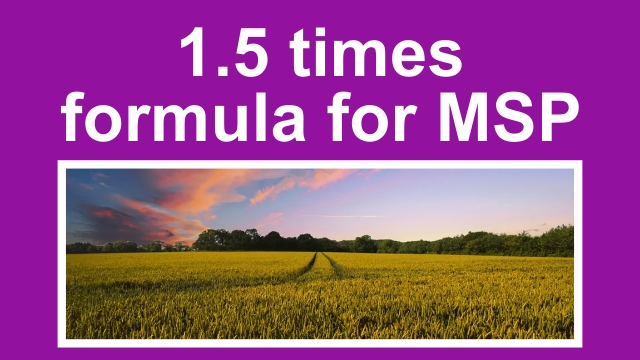Comprehensive News & Analysis
15:46:59
1.5 times formula for MSP
-
The 1.5-fold process is used to calculate the minimum support price (MSP) for crops. This was implemented in the 2018-19 Union budget.
-
According to this formula, the MSP is set at 1.5 times the cost of output for crops as a 'predetermined concept.'
-
Under this formula, the Agricultural Costs & Prices Commission (the Commission that decides the MSP) is only expected to calculate the cost of production for a season and to apply the formula.
How are the minimum support prices of crops fixed?
-
The Commission for Agricultural Costs and Prices, which works under the Ministry of Agriculture, will propose minimum support prices for 23 crops per year. This includes 14 crops grown during the post-monsoon or kharif season and six crops grown during the winter or Rabi season.
-
When determining prices, the Commission examines many variables such as world price patterns, supply and demand for goods, inflation, trade terms between non-agricultural sectors and agricultural sectors, the environment (soil and water) and the cost of cultivation.
-
In the 2018-19 Union budget, it was reported that the minimum support prices would henceforth be set at one and a half times the cost of output for crops.
-
Simply put, the only duty now for the Commission on Agricultural Costs and Prices is to determine the production cost of crops for the season and to apply the 1,5-fold formula and to prescribe the minimum support price.
How is the production cost calculated?
-
No field-based cost forecasts are made by the Commission for Agricultural Costs and Prices. On the other hand, it essentially allows forecasts using crop-specific and state-specific cost estimates of production.
-
These data are provided by the Directorate of Economics and Statistics, which functions under the Ministry of Agriculture. However, these statistics are 3 years old and are not revised regularly.




